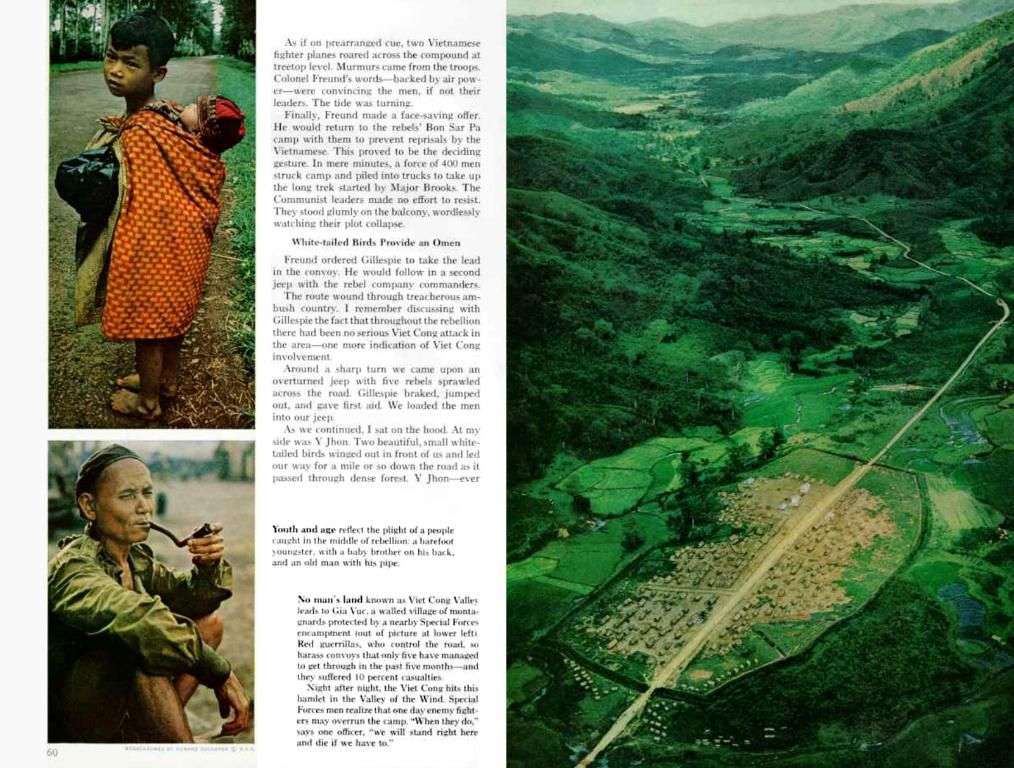Harnessing Virtual Reality for the Development of Tomorrow's Self-driving Vehicles
Virtual Reality Revolutionizes Auto Industry: Hiker Project by ST Engineering Antycip and University of Leeds
Virtual reality (VR) is gaining traction in the automotive sector, transforming various aspects including design, safety, and construction. One notable example is the Hiker project, a collaborative initiative between ST Engineering Antycip and the University of Leeds in England.
A key component of this venture is the utilization of a Cave Automatic Virtual Environment (CAVE), a highly immersive VR space. This enclosed, cube-shaped room serves as a sophisticated projection screen, with each surface – floor, walls, and ceiling – capable of displaying visual content. Users wear stereoscopic glasses and interact with the virtual environment using tracking accessories fitted with sensors.
The applications of a CAVE are vast, extending beyond the automotive industry to education, archaeology, architecture, biology, meteorology, medicine, and physics. In the automotive world, VR offers novel opportunities to optimize future vehicle design.
For the groundbreaking Hiker project, ST Engineering Antycip and the University of Leeds aimed to explore technology that would enable pedestrians to interact with various urban environments and vehicles, improving safety and interaction between humans and autonomous cars. The Hiker's walking space, measuring 9 meters x 4 meters, permits users to move freely and covers a significant distance, enhancing the user experience and facilitating the transfer of experimental results to real-world scenarios. The system's 4K resolution screens and laser projectors generate images of exceptional quality with vivid colors, offering a remarkably realistic virtual environment.
The Hiker lab contributes significantly to research, answering a wide range of questions including automated vehicle design, human interaction, warning system design, and road crossing and intersection configurations. By leveraging this technology, it is possible to create safer, more sustainable cities tailored to future populations' needs.
Immersive visualization technologies like VR have a rich history in the automotive sector, having been employed for designing vehicles within a high-resolution, immersive environment. This facilitates a broad range of activities, from automobile tests to driver perception training and employee education. In turn, this virtual testing offers cost and time savings by permitting concept testing without producing a physical vehicle prototype.
As the era of autonomous vehicles approaches, VR promises to play a pivotal role in shaping this multifaceted ecosystem. In the future, vehicles will communicate with each other, infrastructures, pedestrians, and their surroundings, potentially eliminating human errors, reducing accidents, and enhancing overall journey efficiency.
In the realm of finance, the investment in virtual reality (VR) infrastructure for the automotive industry could reap significant returns as it paves the way for the creation of safer, more sustainable cities and the development of autonomous vehicles. The use of immersive VR technologies like the CAVE for vehicle design, driver perception training, and employee education also offers cost and time savings by enabling virtual testing without manufacturing physical prototypes.
The fusion of technology and finance in the transportation sector, particularly the automotive industry, could unlock new opportunities for innovation. By financing projects that harness VR, investors could contribute to the development of smarter, more efficient transportation systems, revolutionizing how we interact with and travel within our cities.








